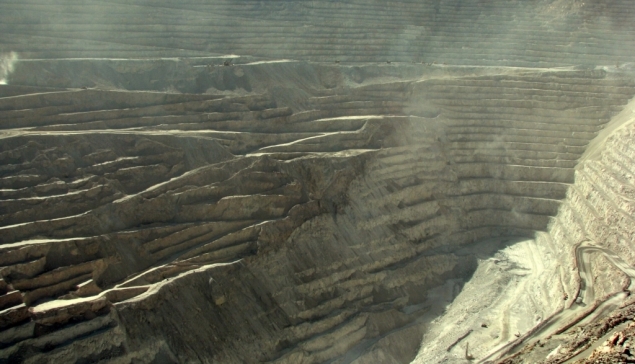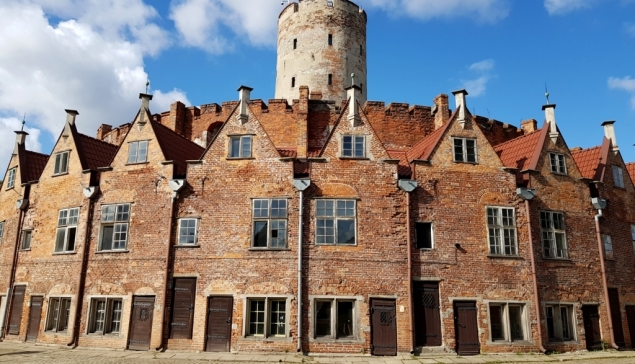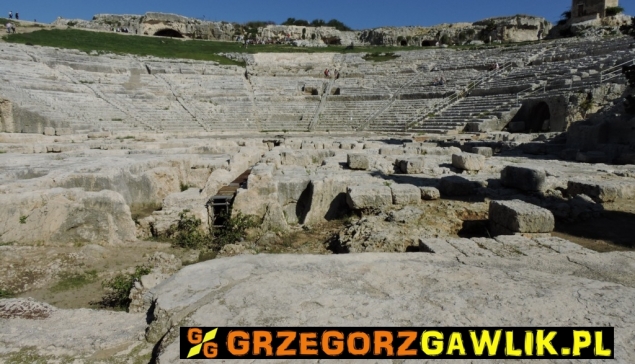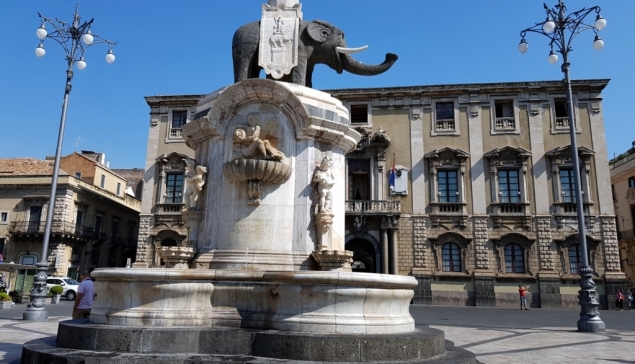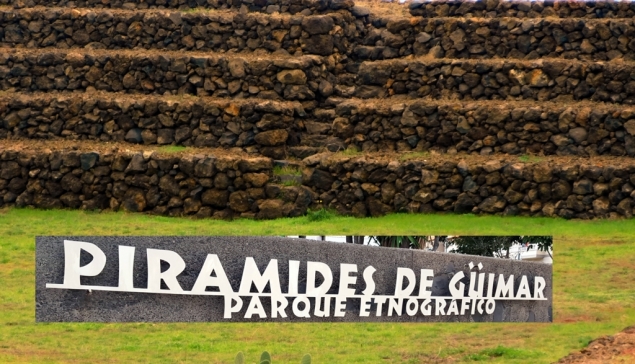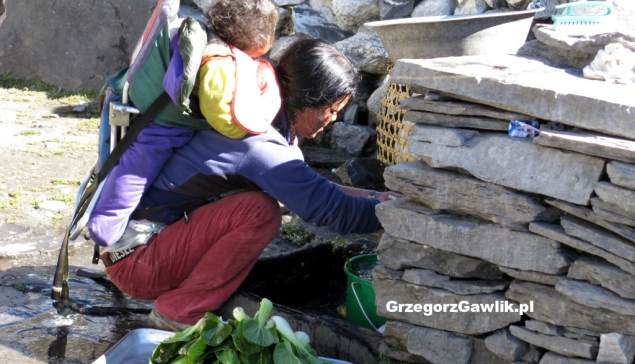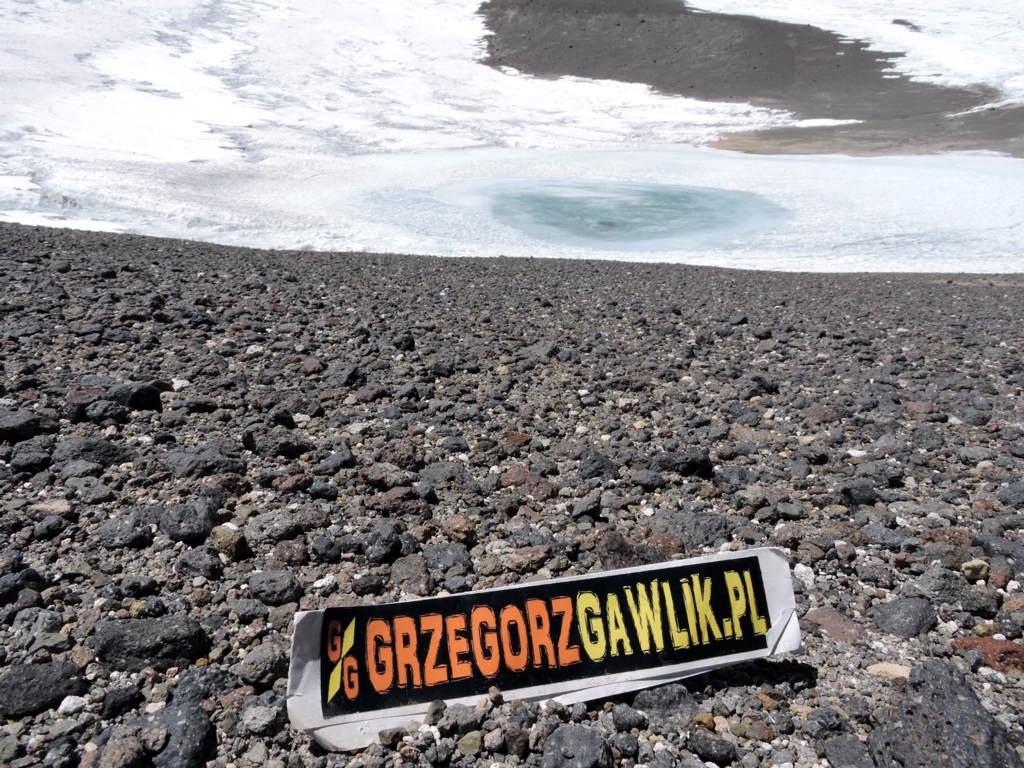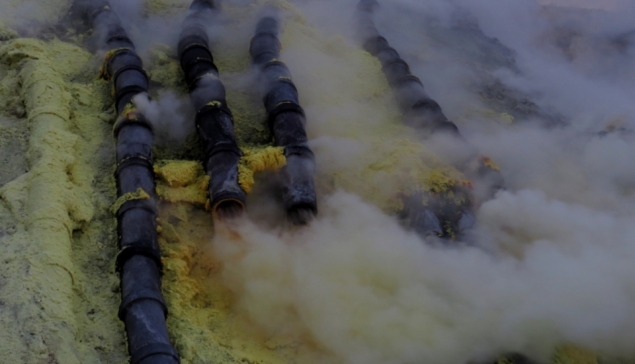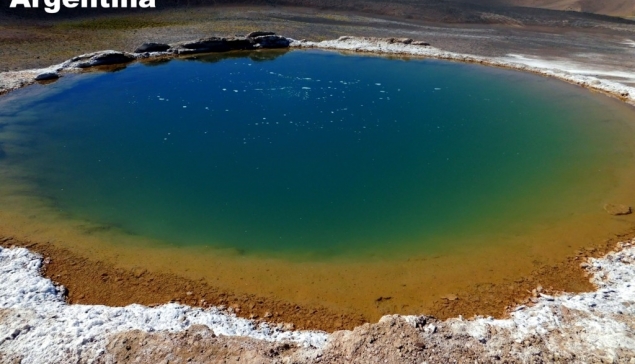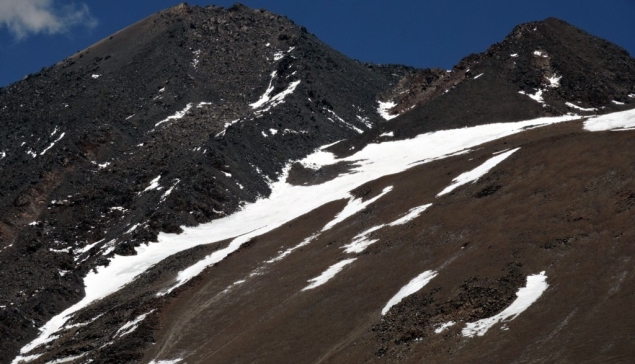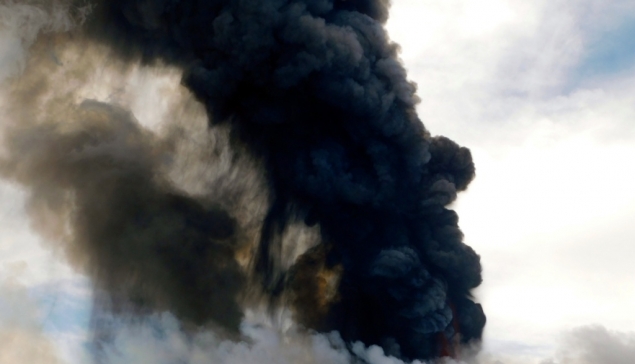While exploring the activity of the highest volcano in the world, Ojos del Salado (6896m), I encountered a few lakes situated at a very high altitude – the highest lakes in the world, all of volcanic origin. In their identification I used numbers and names (working names) invented by myself. Three of the discovered lakes are situated higher than the ones previously considered to be the highest in the world.
1 - (Under the Rock), Argentina, approx. 6350m, approx. 140x70m, the largest on the list, powered by the glacier (the glacier meltwater flows into the lake). The lake occupies a fairly large rocky crater. The terrain suggests that this is the deepest lake of all – the depth can exceed a dozen meters (measurements and geographical coordinates: GPS Garmin eTrex vista cx 01/January/2016 - 6348-6349m (+/- 7-8m), garmin etrex vista cx 02/January/2015 - 6342-6343m (+/- 12-17m), S 27 06 819 W 68 31 619 /// GPS holux fun trek 130 02/January/2016- 6368-6369m (+/- 6m), S 27 06 49 260, W 68 31 37 074).
2 - (Water Flow), Argentina, approx. 6360m, approx. 60x25m, shallow, approx. 2-3m deep. Located in a small recess, the only stream-fed lake from which a stream also flows out (water stream flows through the lake and deposited gravel and sand have a destructive impact on the lake). Other lakes on the list do not have outflows. It is located next to the lake no. 1 (measurements and geographical coordinates - 02/January/2016: GPS garmin etrex vista cx - 6357-6358m(+/- 8-9m), S 27 06 684, W 068 31 689 /// GPS holux fun trek 130 - 6374-6375m(+/- 5-6m), S 27 06 40 950, W 68 31 41 328).
3 - (Numero Uno), Argentina, approx. 6395m, approx. 100x45m, estimated depth of approx. 5m to over 10m (highly doubtful). Large fluctuations in water level. Thick ice cover. So far this lake has been considered to be the highest lake in the world. But is it really so? One thing is sure – small glaciers that feed it will not melt quickly. The lake is quite large in size and is probably the second deepest of all the six (measurements and geographical coordinates - 02/January/2016: GPS garmin etrex vista cx - 6398-6400m (+/- 9m), S 27 07 160, W 68 32 119 /// GPS holux fun trek 130 - 6390-6391m (+/- 5m), S 27 07 09 492, W 68 32 06 276).
4 - (Hidden Lake), Argentina, approx. 6415m, approx. 65x20m, shallow, about 2-3m deep. Is powered from a small glacier which does not appear to be melting quickly. The lake is located in a crater very close to the lake no. 3, and is visible only from the point near the top of Ojos del Salado (measurements and geographical coordinates: - 02/January/2016: GPS garmin etrex vista cx - 6419-6420m (+/- 9m), S 27 07 312, W 68 32 290 /// GPS holux fun trek 130 - 6412-6413m (+/- 10m), S 27 07 18 516, W 68 32 16 824).
5 - (Next to Solfataras), Chile, approx. 6460m, approx. 100x50m, looks shallow to about 5 m deep. Powered by thermal waters from a geothermal field from which sand and gravel are deposited; does not freeze completely, even in winter. Powered also by glaciers, and ice-covered because of the height. The geothermal field is located at approx. 6460-6500m, and is probably the highest one in the world (measurements and geographical coordinates: - 03/January/2016: GPS garmin etrex vista cx - 6460-6461m(+/- 7m), S 27 06 563, W 068 33 054 /// GPS holux fun trek 130 - 6488-6489 (+/- 6m), S 27 06 33 924, W 68 33 03 240).
6 - (Surprise Lake), Argentina, approx. 6510m, approx. 40x20m, approx. 1-2m deep (estimated). I came across it while going from the lake no. 3 to the pass at 6700m beneath the top of Ojos del Salado. It consists of two small pools, but one (smaller) is not worth mentioning. The lake is ice-bound to the ground level (half a meter deep) and connected to a second narrow ice isthmus. The smaller pool was omitted in the above dimensions (obtained by GPS). The larger pool is certainly shallow, but under the ice there was water. The glacier that feeds it, although small, will not melt quickly (measurements and geographical coordinates: - 02/January/2016: GPS garmin etrex vista cx - 6505-6506m (+/- 9-10m), S 27 07 042, W 068 32 506 /// GPS holux fun trek 130 - 6515-6518m (+/- 6m), S 27 07 02 526, W 68 32 29 778).
General facts about all the lakes:
- their large surfaces were covered with ice to the ground level, the water was visible only in central parts, especially in lakes no. 1, 3 and 5. In winter, this phenomenon probably intensifies.
- depending on the year, big fluctuations in water level can be observed, from a few dozen centimetres to about two meters, which highly influences the surface. All the lakes can be found in relatively flat volcanic craters or other types of hollows.
- they are powered (fed) by specific small local glaciers - mix of ice, snow and penitents of small thickness, typically a few meters; rainfall occurs very rarely.
BRIEF SUMMARY and CONCLUSIONS
I cannot find any arguments against calling the described water reservoirs lakes. The fact that some of them are small or shallow does not mean they cannot be defined this way. They are of natural origin and have water supply provided by snow, glaciers, sometimes precipitation. Thus, the lake no. 6 (Surprise Lake) seems to be the uppermost lake in the world (if not completely frozen, because then the case becomes questionable). The lakes are located close to one another with the exception of the Chilean one (no. 5 - Next to Solfataras), which in fact is also not very far, as it is situated on the other side of the borderline pass. The most serious impression – in terms of location, size and depth – is definitely made by lake no. 1 (Under the Rock). Even this brief comparison enables us to see the difference. The advantage of the ‘Next to Solfataras’ lake is that it’s partially fed by hot water, which prevents it from complete freezing.
Water reservoirs no. 4, 5 and 6 are situated higher than the lakes previously considered to be the highest in the world.
At least one of the three lakes - no. 4 (6415m -Hidden Lake), 5 (6460m - Next to Solfataras) and 6 (6510m - Surprise Lake), is the newly-discovered highest lake in the world.
- The pictures present: lakes around Ojos del Salado
- 1-22) Lake 1 - (Under the Rock), Argentina, approx. 6350m.
- 23-38) Lake 2 - (Water Flow), Argentina, approx. 6360m.
- 39-68) Lake 3 - (Numero Uno), Argentina, approx. 6395m.
- 69-89) Lake 4 - (Hidden Lake), Argentina, approx. 6415m.
- 90-118) Lake 5 - (Next to Solfataras), Chile, approx. 6460m.
- 119-133) Lake 6 - (Surprise Lake), Argentina, approx. 6510m.
- 134) Lakes: 3, 4, 6 and seventh lake 6375-6400m - as seen from the Argentinian summit of Ojos del Salado.
- 135-136) The seventh lake, approx. 6385-6400m, Argentina.
- 137-140) The eight lake, approx. 5900m, Chile (near refugio Tejos).
Error




